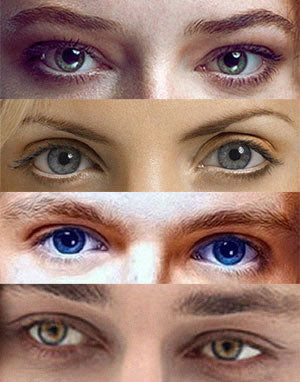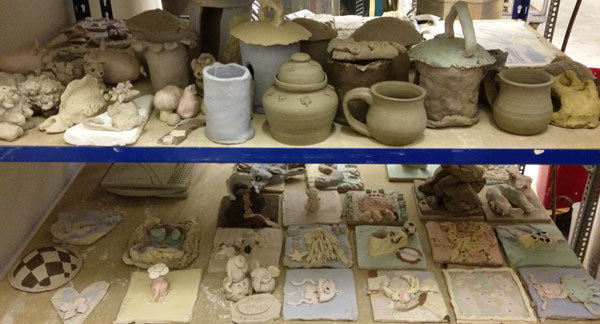Purpose
Generally, mobile phones are not welcome during a training course. They can distract or annoy people if not switched off. However, like any technology there can also be an advantage for having them around. A series of exercises are presented here that involve using mobile phones to conduct icebreakers, get people to know each other better and facilitate team building exercises.
For all the following exercises, it is assumed that delegates have access to their personal mobile phones, access to internet from the mobile and that they can send text and images to each other. To reduce potential data costs, get them use a Wi-Fi network if possible. For each exercise, instructions are provided on when contacts need to be exchanged or what kind of information needs to be shared. Give your own number to all delegates as several of the exercises require delegates to send you images. You may also need to have access to a system where you can receive these images and show them on a projector so everyone can see an enlarged view of them. This makes many of the exercises easier to conduct rather than relying on seeing images on individual small screens. An alternative approach is to print images directly from you mobile but this can be costly.
Having gone through this collection, if you know of other useful exercises involving mobile phones, please share them below in the comments section.
Photo Sharing
This is an icebreaker helping delegates to get to know each other more:
- Divide the delegates to groups of three.
- Ask delegates to choose three photos on their mobile phones to share with others.
- Give them one minute to choose the three photos. Ask them to choose pictures that say something about them so that others in the group can learn a bit about their world.
- Ask delegates to show their photos to their group.
Whose Eyes Are Those?
This is an icebreaker that helps to bring people closer while also lightening up the mood:
- Divide the delegates to two groups.
- Each group should nominate one person who would be their photographer using a mobile phone. Ideally, this should be a person who is quick in taking photos and editing them so you can go through this exercise quickly.
- Ask the two nominees to exchange contact numbers so they can send photos to each other.
- Ask each group to take a close shot of every member’s eyes using a single mobile phone. The pictures should then be cropped so only the eyes are visible. Here is an example:

- Ask each nominee to send all the eye images to the nominee of the other group.
- Each group should now examine the images and spot who they belong to. They can check their guesses with the other team to make sure they got it right.
The Most Useful App
This is an information sharing exercise which can also be an icebreaker. It is designed to get people talk about their world while also introduce people to new things:
- Ask delegates to state the brand of their mobile phones.
- Create three groups. One for the most popular brand in the group, one for the second most popular brand and the third group for everybody else. For example, Group 1 will consist of all delegates that have an iPhone, Group 2 will consist of all that have an Android phone and Group 3 will be those who have a Windows Phone and other types.
- Ask delegates to think of the most useful app they have on their phones. This must be other than the usual apps everyone uses that are often standard. For example, they should not count the mail app, or the camera app or the calculator. Instead, they should think of their most useful app other than the standard apps.
- Allocate 1 minute for this part.
- Ask each group to nominate a person who would time the following activities using a timer. It is important to bound the exercise is otherwise easy to get carried away.
- Ask members of each group to share the name of their favourite app with their group. Each person has two minutes to explain what the app is and why it is the most useful app for them. Others can make a note of it.
- Other group members can ask questions to understand what the app does better. They have two minutes for this.
- Continue with the next person until everyone had a chance to talk about their favourite app.
- Ask each group to nominate the top 3 apps from all those apps discussed in their group.
- Bring back everyone together.
- Ask each group to present their three nominated apps to everyone else. This exchange can increase awareness of favourite apps on other systems. They can also discuss equivalent apps on other systems.
- Optionally at the end of this exercise allocate time so delegates can give these apps a try—perhaps by downloading a free version. They can also ask any questions from those who use the apps often.
Make a Sentence
The following sentence making game is based on traditional games except it is carried out with mobile phones. It is fast paced and can be a lot of fun. As such, it is an ideal energiser:
- Get the delegates to form a circle.
- Ask delegates to use What’s App or any universal text messaging app so they can send free text messages to each other.
- Ask each person to exchange contact with the person to their left.
- Ask each person to send “Hi” to the person on their left to make sure everyone is setup and good to go.
- Nominate two people in the circle that are opposite each other who will start the exercise.
- Explain that throughout the exercise they will be adding words to a sentence they receive from the person next to them and that the most important rule is that the sentence must make sense and be grammatically correct.
- Ask each of the two people to send a text message to the person on their left. The text message:
- Must be a single word.
- Should be the start of a sentence.
- The two people who receive the text messages, must now add another words to the single word they just received and send each to the person on their left while aiming to form a sentence.
- This should then continue until it becomes increasingly difficult to add more words to the sentence.
- You can stop the exercise after one or two full circles and ask the last person to read the sentence out loud.
- Here is an example of a sentence produced at the end of the exercise:
- “She went as far as the blinding dragon that no alien was angry to contemplate an encounter as glorious and as slimy as white cabbage that Daenerys …”
- You can increase the difficulty or pace of the exercise by asking the delegates to generate three or more simultaneous sentences by getting three or more nominees start a sentence. You can also get some sequences go clockwise while others go counter-clockwise to add variety.
Story Telling Using Images
This is a creativity exercise which can also be used for teambuilding:
- Explain that the purpose of this exercise is to make a story from a series of images.
- Get the delegates choose a single image from their mobile phones that will become part of the story.
- Allow 1 minute for this part.
- Ask the delegates to send their images to you so you can collect them all in one place.
- Place these images in an empty slide as a grid.
- Once you have prepared the slide, switch to a folder to show the images one by one on the projector so all delegates can see them in large scale. If it is not obvious what the image is, the person who shared it should explain. It is ok if people say who the image belongs to as it can make the exercise more entertaining.
- Once all images are shown, show the grid of the images on the projector which acts as a reference.
- Divide the delegates to two groups.
- Ask each group to make a story out of all the images.
- Allocate 20 minutes for this. You can optionally allocate more time if you want a lengthier story depending on the purpose of your training.
- Ask delegates to write their stories on paper. It should be about 500 words.
- After the allocated time, bring back everyone together and ask them to present their stories to the other group.
- Expect each group to comment and provide feedback.
- Encourage a discussion.
What Are Your Dreams and Values?
This exercise helps with goal setting and possibly reinforcing current dreams, ambitions and values:
- Ask delegates to think of the following:
- What is your dream? Where are you in 10 years? What do you like to have that you don’t already have?
- What is an important value to you? A value is personal and usually describes what is important to you on a deep level. Examples are:
- Achievement
- Punctuality
- Honesty
- Mindfulness
- Friendship
- Selflessness
- Success
- Worthiness
- Steve Pavlina has a large list of values here which you can refer delegates to if needed.
- Once they have thought of their dreams and decided on their top value, ask them to search the internet or use images they already have on their mobile phones to choose an image for each answer. They should end up with one image that represents their dream and one that represents their top value.
- Allocate 15 minutes for this.
- Ask delegates to send you their two images. Create a folder or name the images so you know what image belongs to whom.
- For each delegate show the images on the projector so everyone can see them. Ask the person to explain what the images represent and why they chose that particular image as the most suitable for the concept. Encourage other delegates to ask questions. Showing the images and the exchange can lead to commitment so this exercise can become a great motivator in achieving the goals and dreams discussed and adhering to the top value.
Self-Made Spot the Difference
The following exercise can be used an icebreaker or for problem solving:
- Divide the delegates to two groups.
- Ask one group to leave the room.
- Ask the delegates in the room to form a line so everyone can be seen in a photo.
- Take a group photo from a specific spot using your mobile phone.
- Ask delegates to make subtle changes to their appearance. Examples are to take glasses off, fold arms, put hair down, close eyes, open mouth, raise an arm and to take an item of clothing off and so on.
- There should be no more than two changes per person.
- From the same spot, take another group photo. You now have two images that have subtle differences between them.
- Ask the group to go back to their original appearance.
- Ask them to leave the room and get the other group to come back to the room.
- Repeat the same process to obtain two images of this group as well.
- Ask the other group to come back to the room.
- Print all four images. Alternatively, show two images side by side on a single tablet which means you need two tablets for this. Printing in colour in A4 is the ideal choice.
- Give the two images of one group to the other group and vice versa.
- Ask the groups to spot the differences between the two images.
- The group that can spot all the differences and finishes sooner wins.
Construct an Ideal Copy of a Structure
This is a variation of the popular team building exercise where one team needs to make an identical structure to the one built by another team using a limited form of communication. Consider the following instructions:
- You need two bags of plastic toys that can be used to construct a structure. You can consider any toy so long the teams can make stuff with them. A good example is Lego. The two bags need to have identical components.
- Divide the delegates to two groups.
- Give one bag to each group.
- Ask each group to nominate a communicator and get them to exchange contact information so they can text or call each other.
- Place the groups into separate rooms so they cannot overhear or see each other.
- Ask one team to construct a structure using their materials.
- Allow 5 minutes for this part. You can control the complexity of the structure and hence the difficulty of the exercise by the amount of time you allocate for this part.
- The objective of the other team is to construct an identical structure but by only relying on the information exchange through the two communicators. The exchange can be in the form of text messages or a voice calls. No images or videos can be sent.
- The constructing team should continue until they feel they have created an identical copy of the structure.
- Bring back both teams together and get them to compare their structures.
- Swap roles for groups and repeat the exercise.
- Bring back everyone and follow with a discussion. Highlight issues on communication, limited information, teamwork, developing a precise and accurate vocabulary to describe the structure and using text as an alternative to just describing on the phone.
Comments
By Nikki @ Wednesday, March 22, 2017 6:16 PM
Thank you for this post. I have searched high and low for training activities that involved cell phones. I have a class starting in an hour. I will definitely be using at least one of these ideas today!
Soft Skills Training Materials
Get downloadable training materials
Online Train the Trainer Course:
Core Skills
Learn How to Become the Best Trainer in Your Field
All Tags
Training Resources for You

Course Design Strategy
Available as paperback and ebook

Free Training Resources
Download a free comprehensive training package including training guidelines, soft skills training activities, assessment forms and useful training resources that you can use to enhance your courses.

Our Comprehensive Guide to Body Language

Train the Trainer Resources
Get Insights - Read Guides and Books - Attend Courses
Training Materials
Get downloadable training materials on: Management Training, Personal Development, Interpersonal Development, Human Resources, and Sales & Marketing














Leave a comment
All comments are moderated before being published.
This site is protected by hCaptcha and the hCaptcha Privacy Policy and Terms of Service apply.